Commercial, Industrial, Sourcing Renewables - October 8, 2018
RE Sourcing Forum Wrap-Up: A Collaboration-Driven Model
Smart Energy Decisions’ Renewable Energy Sourcing Forum’s fall event focused on the theme of collaboration as interest in renewable energy continues to expand. In addition to more traditional large energy buyers from commercial and industrial companies, new market entrants, including representative of cities and higher education, attended the event to interact and learn from their more experienced peers. General sessions, boardroom presentations, one-to-one meetings, and informal networking provided the chance to share opportunities and challenges.
The Forum, which took place Oct. 1-3 in Ponte Vedra Beach, Fla., hosted energy and sustainability executives from more than 50 companies and organizations, and representatives from more than 30 suppliers, all with the goal of advancing adoption of renewable energy.
“We believe very much in a collaboration-driven model. We think that customers, suppliers, and utilities all have to work in partnership to advance the adoption of renewable energy,” said John Failla, Smart Energy Decisions founder and editorial director, in his opening remarks. “It really takes all three of these stakeholder groups to work effectively in order to move the needle.”
Here are brief highlights of sessions from the Renewable Energy Sourcing Forum. More extensive coverage will follow in our Fall RESF edition of Smart Energy Decisions INSIGHTS, scheduled for later this year.
"A portfolio approach to RE strategy & execution"
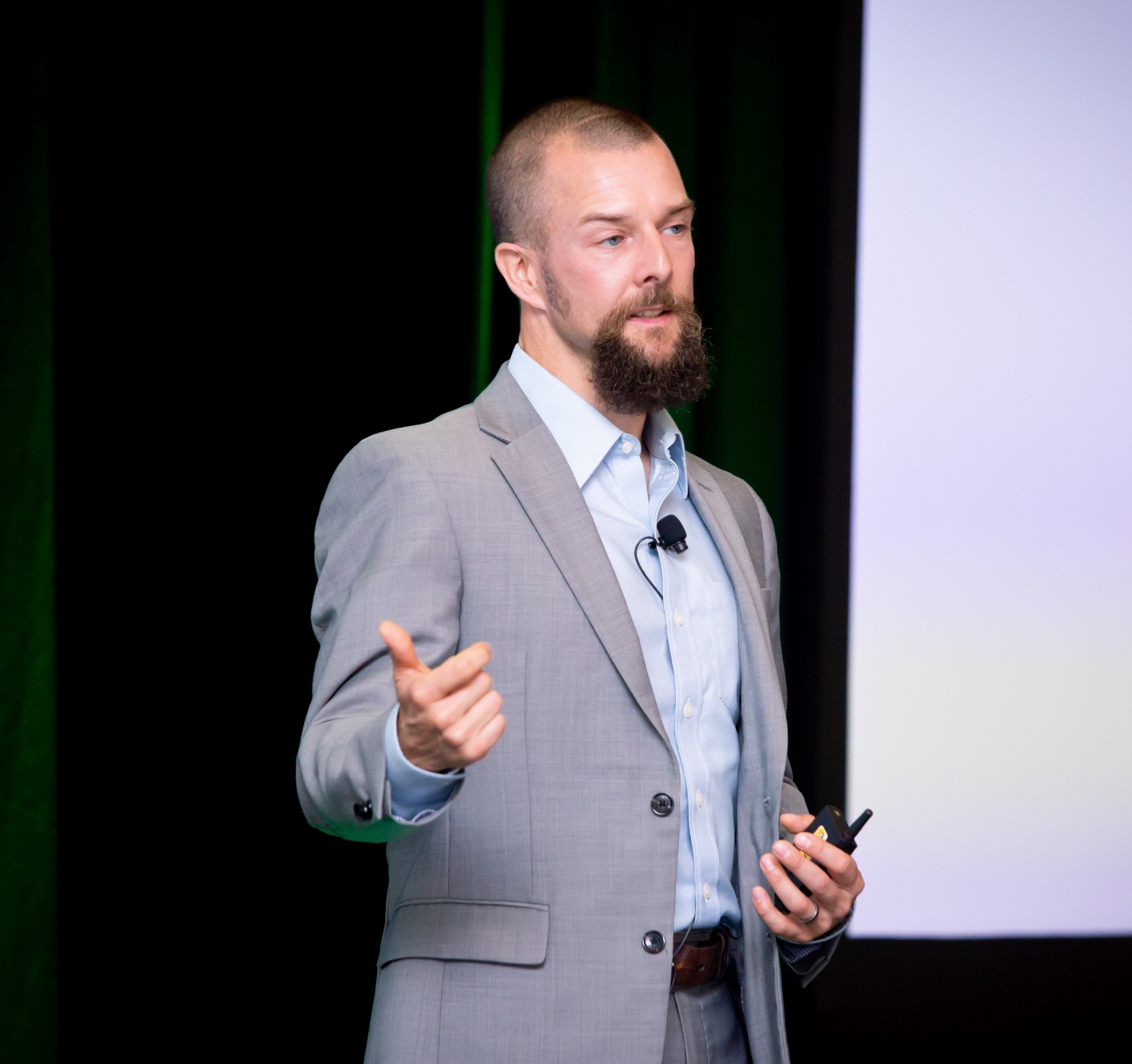 In his opening keynote, Patrick Leonard, manager, energy and resource management at Starbucks, shared his company’s aspiration: "Simply put, it’s sustainable coffee, sustainably served."
In his opening keynote, Patrick Leonard, manager, energy and resource management at Starbucks, shared his company’s aspiration: "Simply put, it’s sustainable coffee, sustainably served."
As recently as two-and-a-half years ago, the company’s transactions were limited to sourcing unbundled RECs. Understanding that "REC sourcing wasn’t a leadership position anymore," the company asked, "What’s next for us. How do we take the 1.3 billion kilowatt hours of renewables that we buy every year in REC spend and do something more valuable with that?" Leonard noted, "You can come a long way quickly if you’ve got the right partners and the right support." He added that the primary audience for their renewables program is Starbucks’ employees. "Talking about additionality or incrementality and RECs and carbon are all pretty abstract to your average Starbucks barista, so we really have to humanize the story as we go."
"Innovation in utility green tariffs"
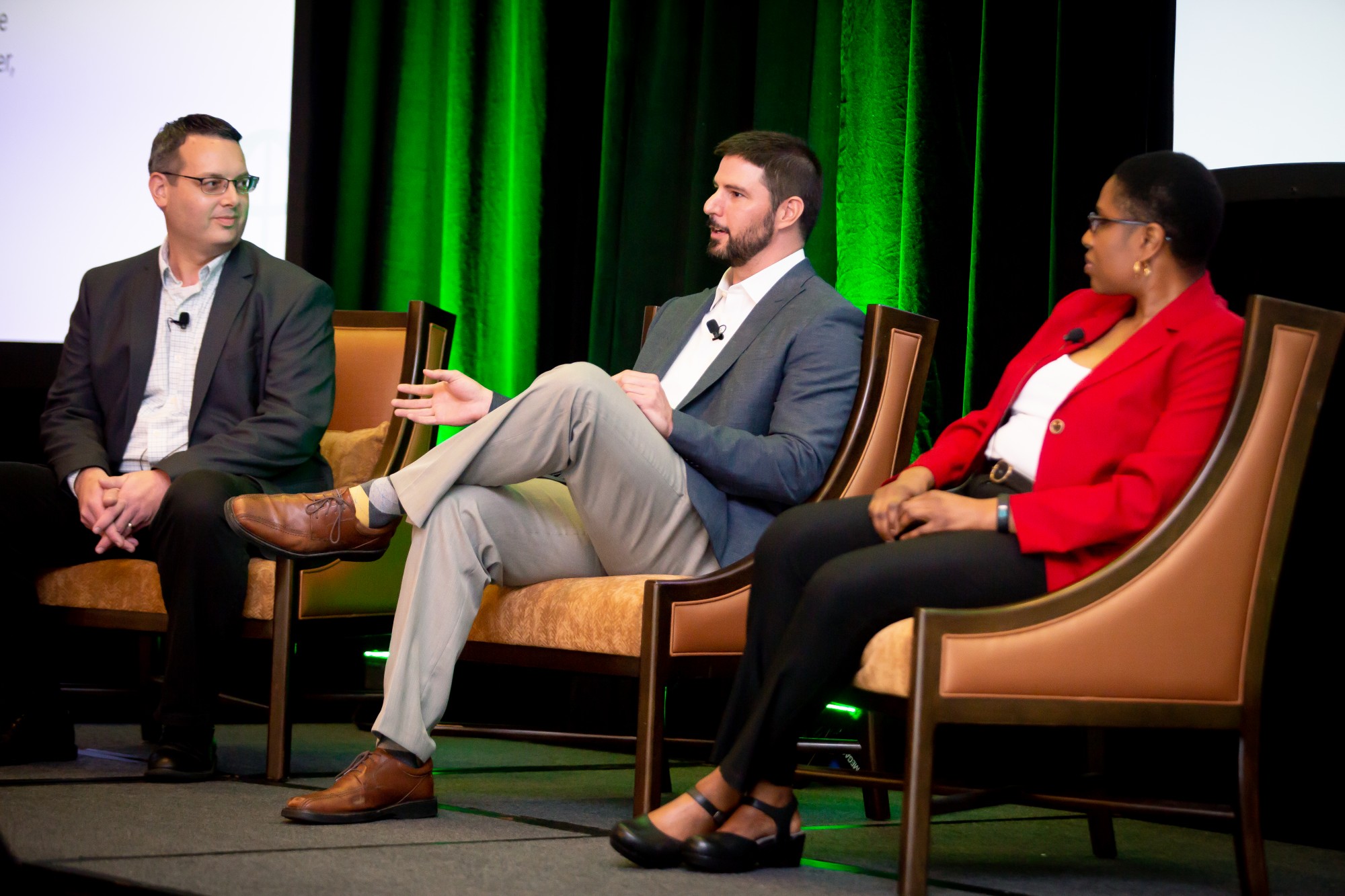 Discussing the evolving role of utilities in developing renewable energy programs for their customers, Quisha Light, project manager at Portland General Electric Company cited her unusual path to the utility, as her earlier career was in the practice of criminal and family law. Her current role involves broader resource strategy. "I’m the person that’s brought in to break down a lot of those utility silos that exist, the things that sometimes have made it very difficult to partner with your utilities."
Discussing the evolving role of utilities in developing renewable energy programs for their customers, Quisha Light, project manager at Portland General Electric Company cited her unusual path to the utility, as her earlier career was in the practice of criminal and family law. Her current role involves broader resource strategy. "I’m the person that’s brought in to break down a lot of those utility silos that exist, the things that sometimes have made it very difficult to partner with your utilities."
Pete Nettles, renewable energy planning manager at Georgia Power, said of his team, "We have the largest voluntary renewable portfolio in the country and we’ve been aggressively adding renewables and doing it in a smart, disciplined way working with the collaboration with our commission." While Georgia Power is a regulated utility, he added, "It hasn’t been a state mandate that’s made us do this. We listen to our customers. We listen to our commission."
Jeff Myrom, renewal energy director & electric vehicle customer products at Consumers Energy, noted that cities are becoming a big opportunity for the utility. "We’re seeing a lot of cities that want to redevelop brownfields or work with an industrial partner who has property and knows they’re going to have a treatment plant on it for the next three decades. He added, "We want people to come forward to us with their own ideas. We see a lot of very tailored goals--carbon reduction, sustainability, that green image—and we want to create programs that are going to help people do that."
"Navigating the energy transition"
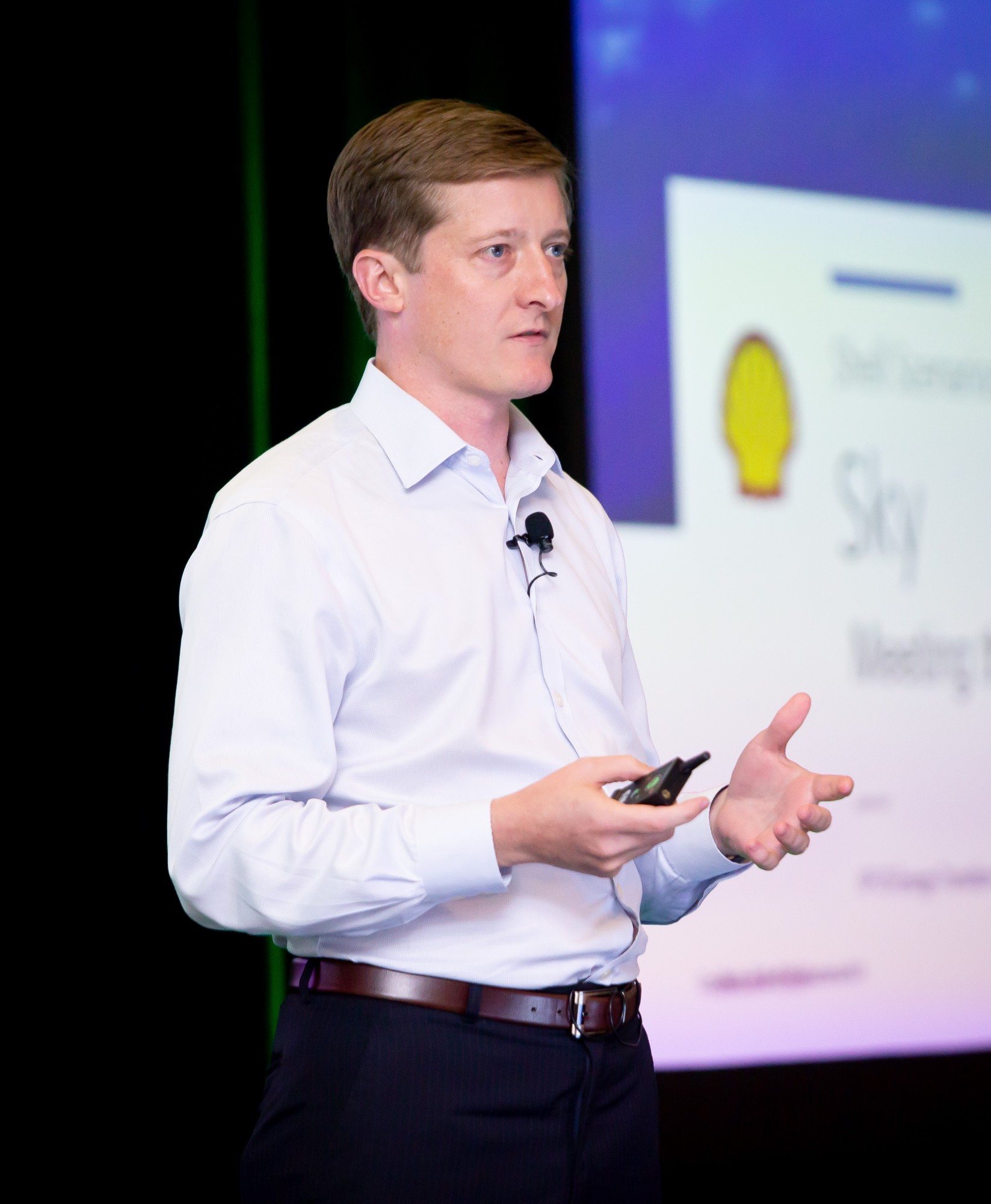 Jason Klein, vice president, U.S. energy transition strategy at Shell, shared his company’s Sky Scenario, which asks, "How can we get to net zero emissions in the next 50 years and deliver on the sustainable development goals that are also part of the Paris Agreement, to provide energy access to everyone in the world?" He explained, "The goal of the Paris Agreement is not zero emissions, it’s net zero emissions. We see a role for carbon capture and storage and nature-based solutions to play critical solutions to address that remaining bit of fossil fuels that are in the system."
Jason Klein, vice president, U.S. energy transition strategy at Shell, shared his company’s Sky Scenario, which asks, "How can we get to net zero emissions in the next 50 years and deliver on the sustainable development goals that are also part of the Paris Agreement, to provide energy access to everyone in the world?" He explained, "The goal of the Paris Agreement is not zero emissions, it’s net zero emissions. We see a role for carbon capture and storage and nature-based solutions to play critical solutions to address that remaining bit of fossil fuels that are in the system."
Klein received a hearty round of applause from the RESF audience when he announced that Shell has committed to invest $1 to $2 billion a year in new energies, looking primarily at new fuels and power. "We intend to thrive through the energy transition," said Klein. "We see the possibility of developing a new energy system that provides energy for everyone without giving us a climate legacy that we’re unable to adapt to as a society. We’re really looking to collaborate with other people to develop energy solutions that work for everybody."
"Toyota Environmental Challenge 2050: Zero Carbon Quest"
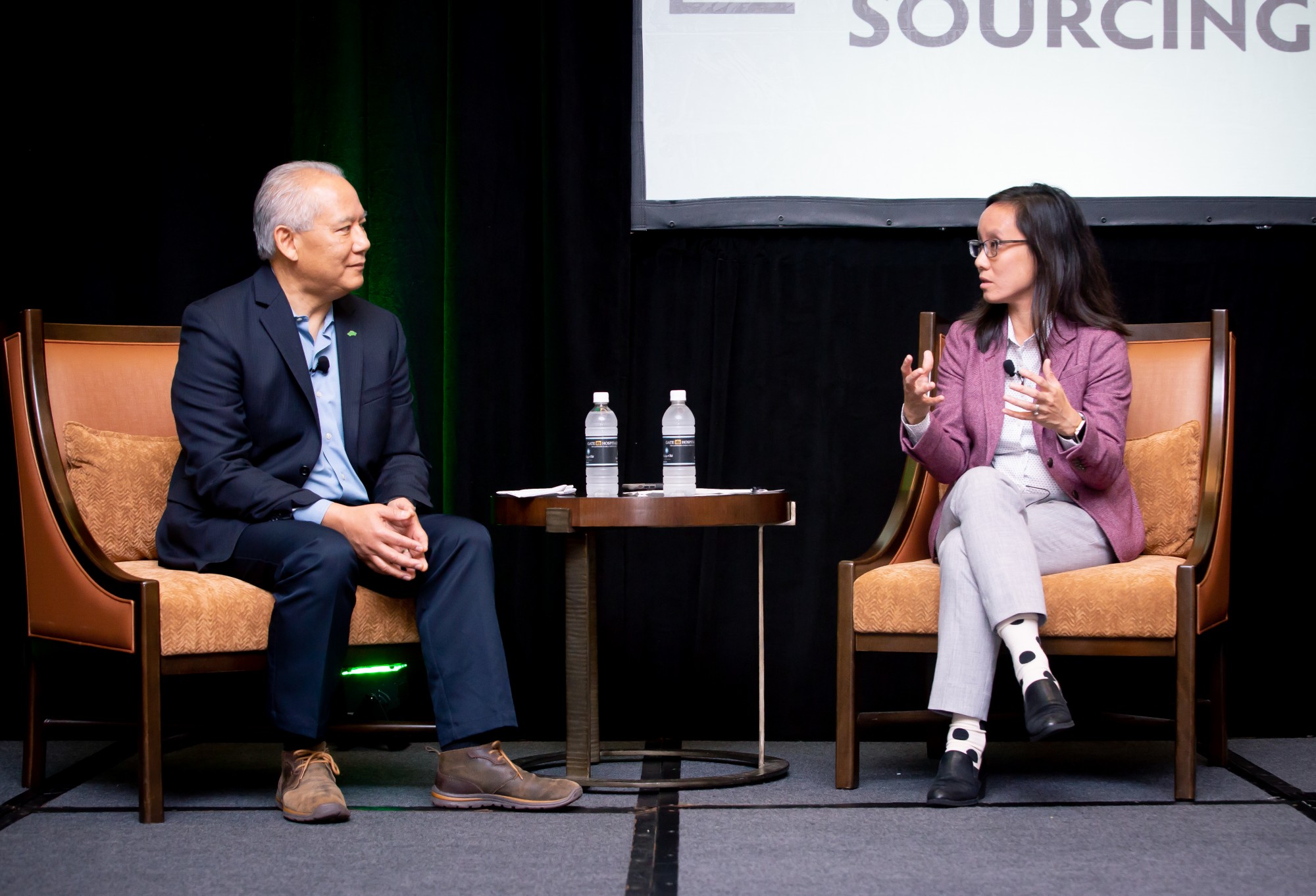 Toyota’s recent addition of 8.8 megawatts of solar power at their manufacturing plant in Plano, Texas, the result of a partnership between Toyota and SunPower. Recalling the decision to go with a solar system, Mark Yamauchi, environmental sustainability manager at Toyota Motor North America, said, "We start first with efficiency, then we look at onsite distributed generation, offsite renewable energy, and other methodologies. What we love about onsite PV is that we have control of it and it inspires our team members and the communities around us."
Toyota’s recent addition of 8.8 megawatts of solar power at their manufacturing plant in Plano, Texas, the result of a partnership between Toyota and SunPower. Recalling the decision to go with a solar system, Mark Yamauchi, environmental sustainability manager at Toyota Motor North America, said, "We start first with efficiency, then we look at onsite distributed generation, offsite renewable energy, and other methodologies. What we love about onsite PV is that we have control of it and it inspires our team members and the communities around us."
Nam Nguyen, executive vice president and general manager, commercial solar at SunPower, said, "For us, it’s really about being at the table with you and your team and trying to solve every problem along the way, and five years later getting to a project that’s not only aesthetically beautiful but also functioning and obviously meeting your sustainability goal and Challenge 2050."
"Smart Energy Decisions RE Market Outlook"
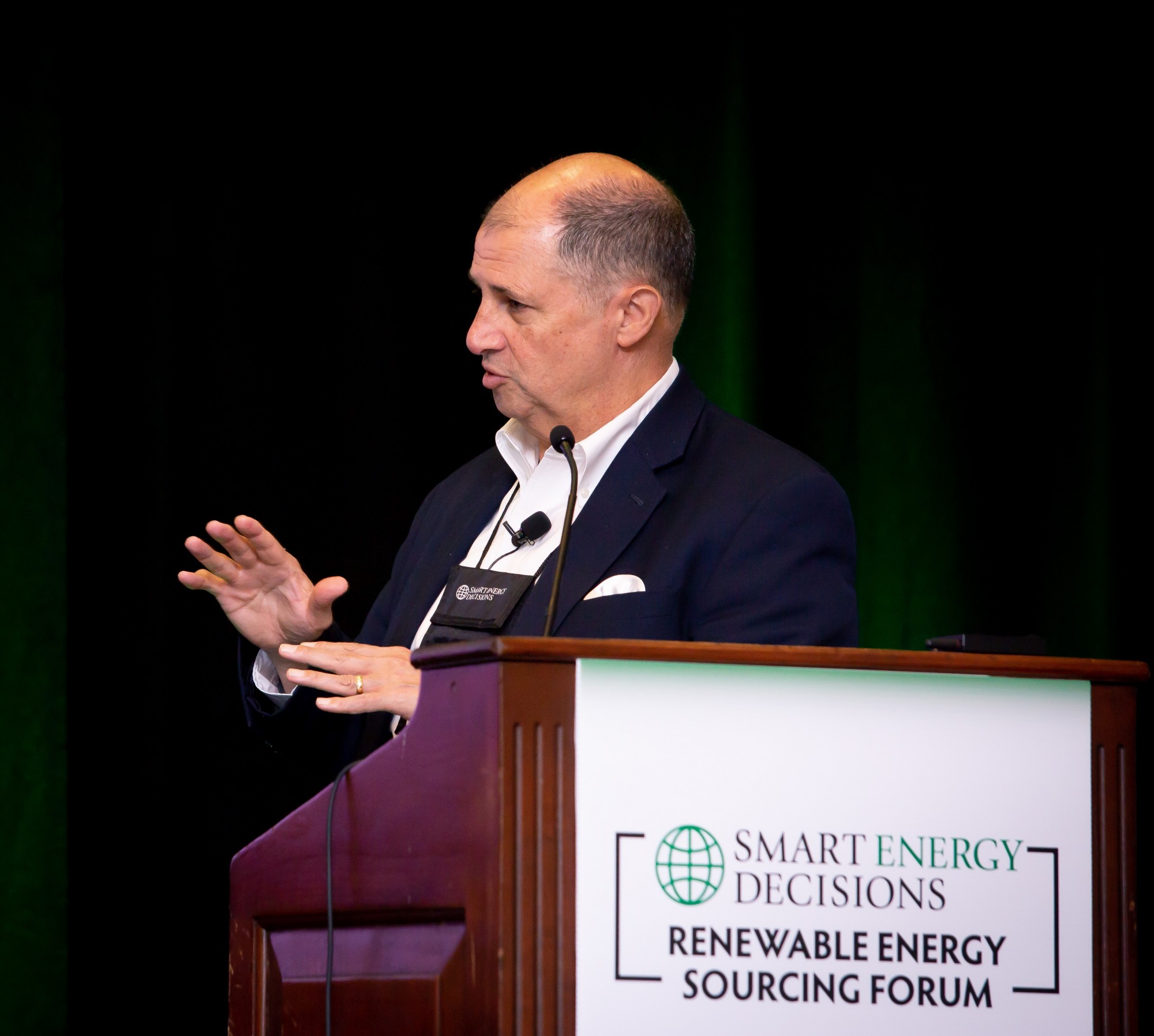 John Failla presented a preview of the findings of SED’s second annual Renewable Energy Sourcing Survey. One Year Post Paris: The State of Corporate Energy Renewable Sourcing,, which is sponsored by ENGIE. Last year’s survey came just two weeks after the Trump Administration pulled out of the Paris Agreement. "Customers, cities, everyone grabbed their pitchforks and stormed the castle, saying, 'We’re going to do this whether you are in the Agreement or not,'" said Failla. "We wanted to see what the sentiment was like this year vs. last year."
John Failla presented a preview of the findings of SED’s second annual Renewable Energy Sourcing Survey. One Year Post Paris: The State of Corporate Energy Renewable Sourcing,, which is sponsored by ENGIE. Last year’s survey came just two weeks after the Trump Administration pulled out of the Paris Agreement. "Customers, cities, everyone grabbed their pitchforks and stormed the castle, saying, 'We’re going to do this whether you are in the Agreement or not,'" said Failla. "We wanted to see what the sentiment was like this year vs. last year."
Calling renewable energy adoption a journey, Failla noted four key stages: consider and decide, surpass barriers, early adoption, and diversified portfolio.
"SED’s Mastermind Community" 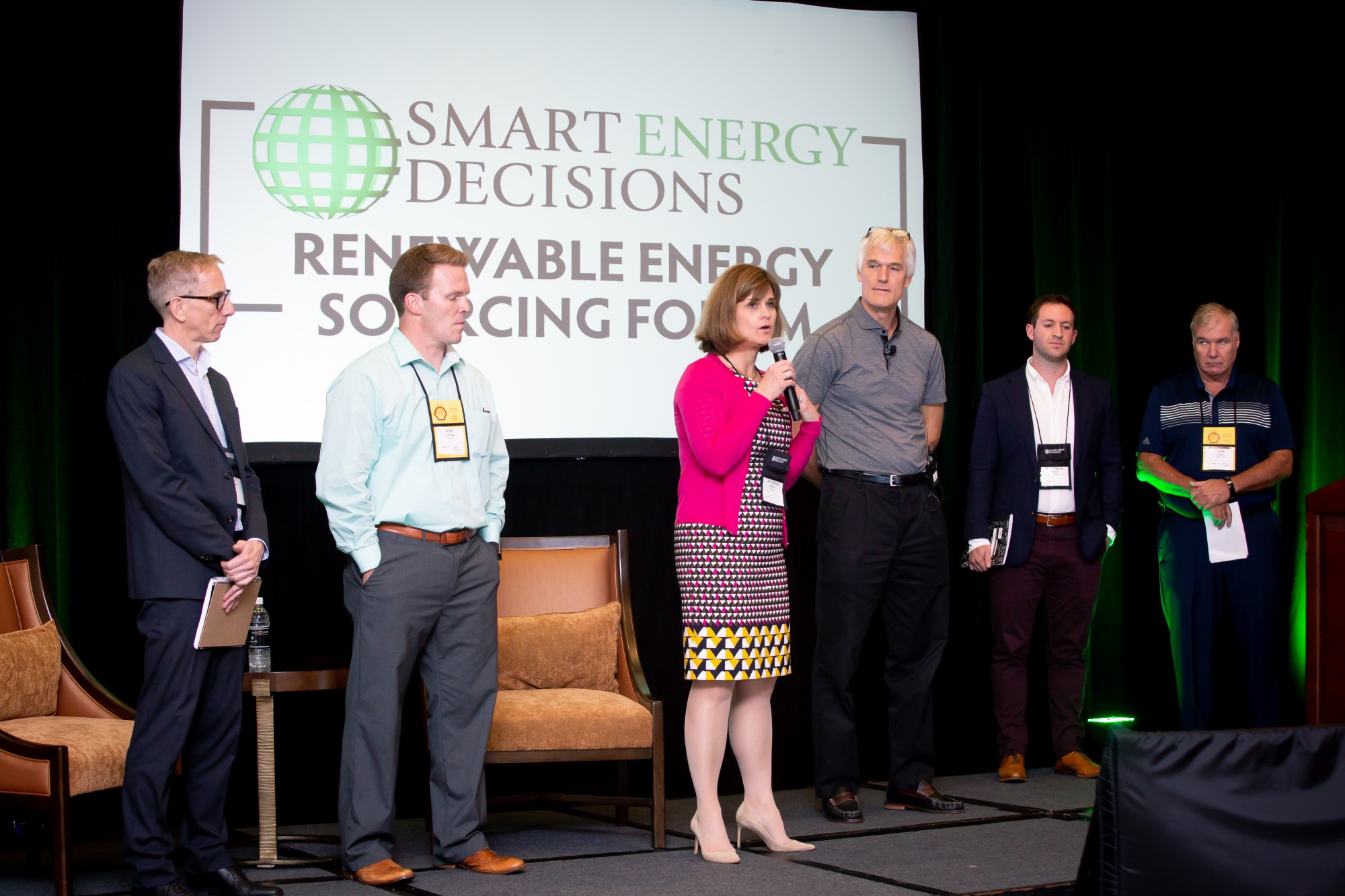 "The people in this room understand more collectively about sourcing renewable energy and dealing with some of these challenges than perhaps any other like-sized group of people," said Peter Kelly-Detwiler, principal at NorthBridge Energy Partners in introducing the "Mastermind Community" exercise. Attendees were split into four groups to discuss Supply Chain, PPA Aggregation, Utility Tariffs, and What’s Next. The focus was on exploring current challenges, developing strategies and next steps to be taken by attendees.
"The people in this room understand more collectively about sourcing renewable energy and dealing with some of these challenges than perhaps any other like-sized group of people," said Peter Kelly-Detwiler, principal at NorthBridge Energy Partners in introducing the "Mastermind Community" exercise. Attendees were split into four groups to discuss Supply Chain, PPA Aggregation, Utility Tariffs, and What’s Next. The focus was on exploring current challenges, developing strategies and next steps to be taken by attendees.
"Walmart’s Project Gigaton"
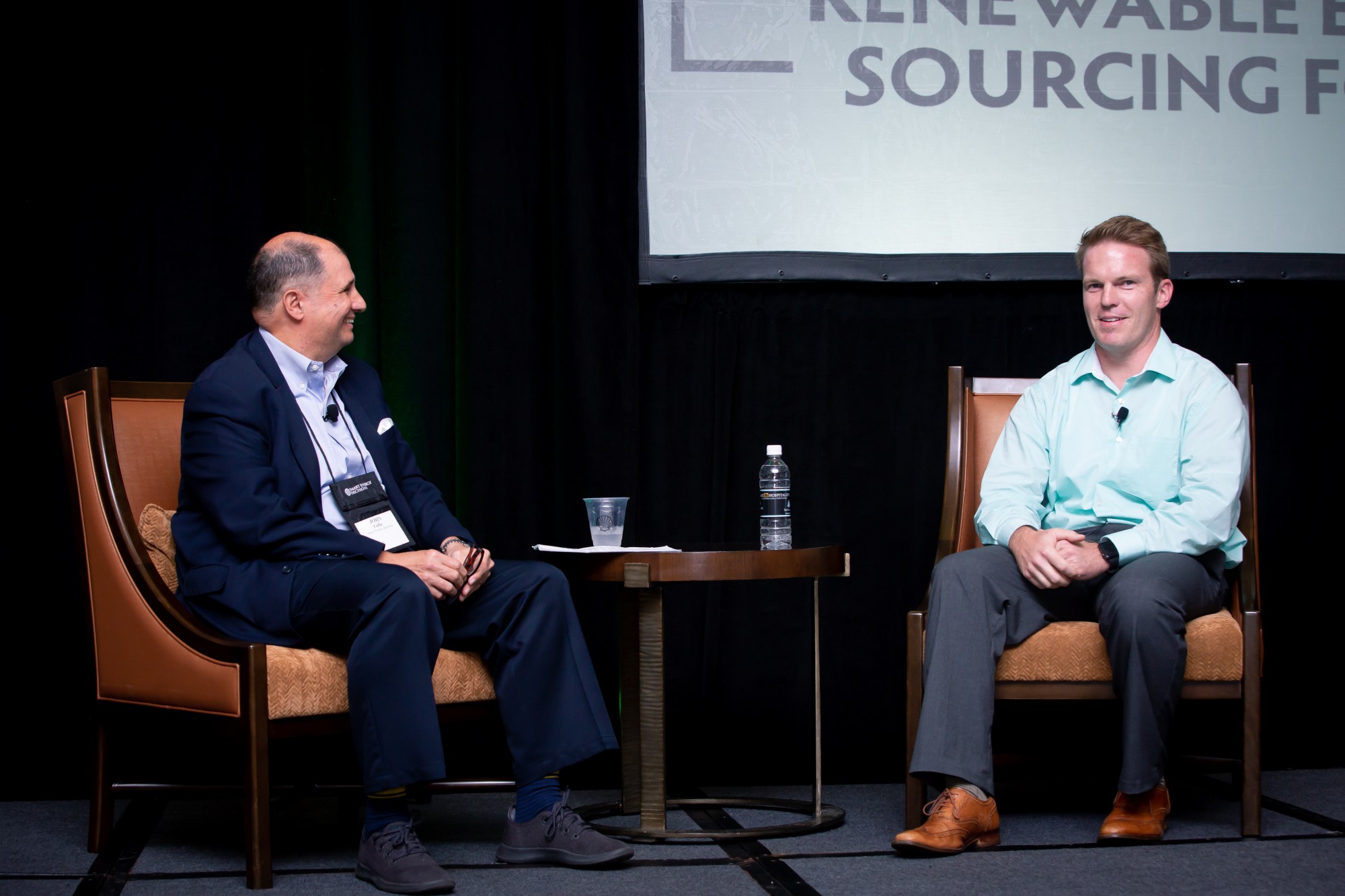 Joby Carlson, global director of sustainable energy and operations at Walmart, presented an update on Project Gigaton, now in the middle of the second year of reporting.
Joby Carlson, global director of sustainable energy and operations at Walmart, presented an update on Project Gigaton, now in the middle of the second year of reporting.
Supplier response has been encouraging, with 600 companies making some type of commitment to Project Gigaton and about 350 companies reporting emissions. "Obviously there’s a lot more than that in our supply chain, but we’re really focused on the biggest companies first because they have the biggest footprints," said Carlson, adding, "They also have the biggest opportunity to improve. Many of them are already leaders. We are not taking credit for that leadership but we’re saying, 'We love what you’re doing, keep doing it and doing it more, help bring others in the supply chain along with you.'"
"Kohler’s journey in RE sourcing"
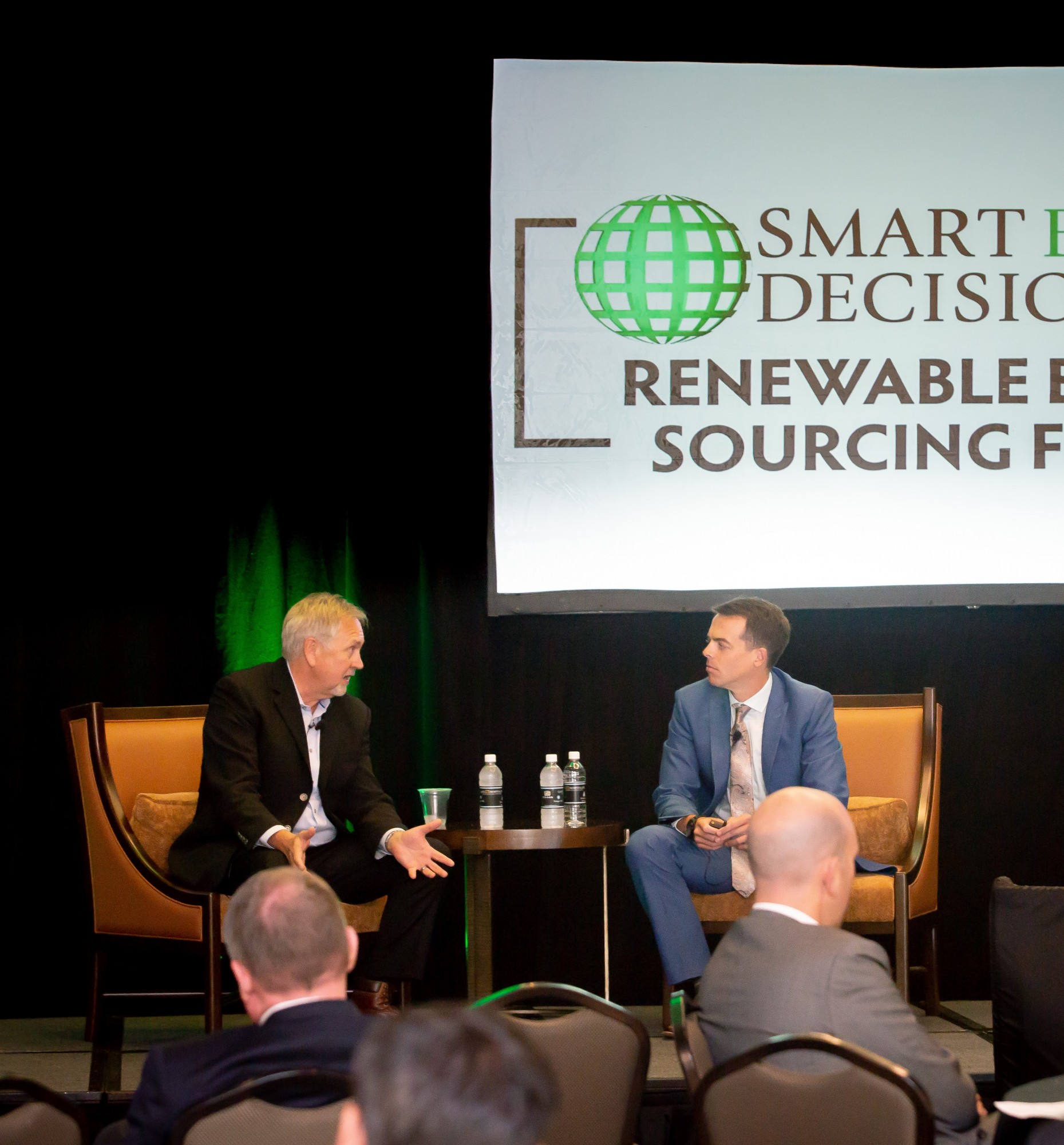 Earlier this year, Kohler announced the purchase of 100 MW of wind power annually, which is equal to their total U.S. and Canadian demand, as part of their overall commitment to net zero in greenhouse gas emissions by 2035. In a conversation between Nathan Nissen, principal engineer, sustainability at Kohler Co., and Hans Royal, director of strategic renewables at Schneider Electric, Nissan said, "We’re trying to find ways to benefit not only our customers and the people that work at Kohler but also the environment and the company. One of the quotes we often say is from David Kohler: It’s okay to be on industrialist and a capitalist and environmentalist all at the same time. That’s really a value that I and a lot of Kohler associates try to emulate."
Earlier this year, Kohler announced the purchase of 100 MW of wind power annually, which is equal to their total U.S. and Canadian demand, as part of their overall commitment to net zero in greenhouse gas emissions by 2035. In a conversation between Nathan Nissen, principal engineer, sustainability at Kohler Co., and Hans Royal, director of strategic renewables at Schneider Electric, Nissan said, "We’re trying to find ways to benefit not only our customers and the people that work at Kohler but also the environment and the company. One of the quotes we often say is from David Kohler: It’s okay to be on industrialist and a capitalist and environmentalist all at the same time. That’s really a value that I and a lot of Kohler associates try to emulate."
In fact, said Nissen, it was David Kohler who asked the company’s leadership team to pursue renewable energy projects. This was eight years ago, which Royal noted, "in the corporate renewable energy space, it might as well be a century ago."
"Innovations in RE sourcing"
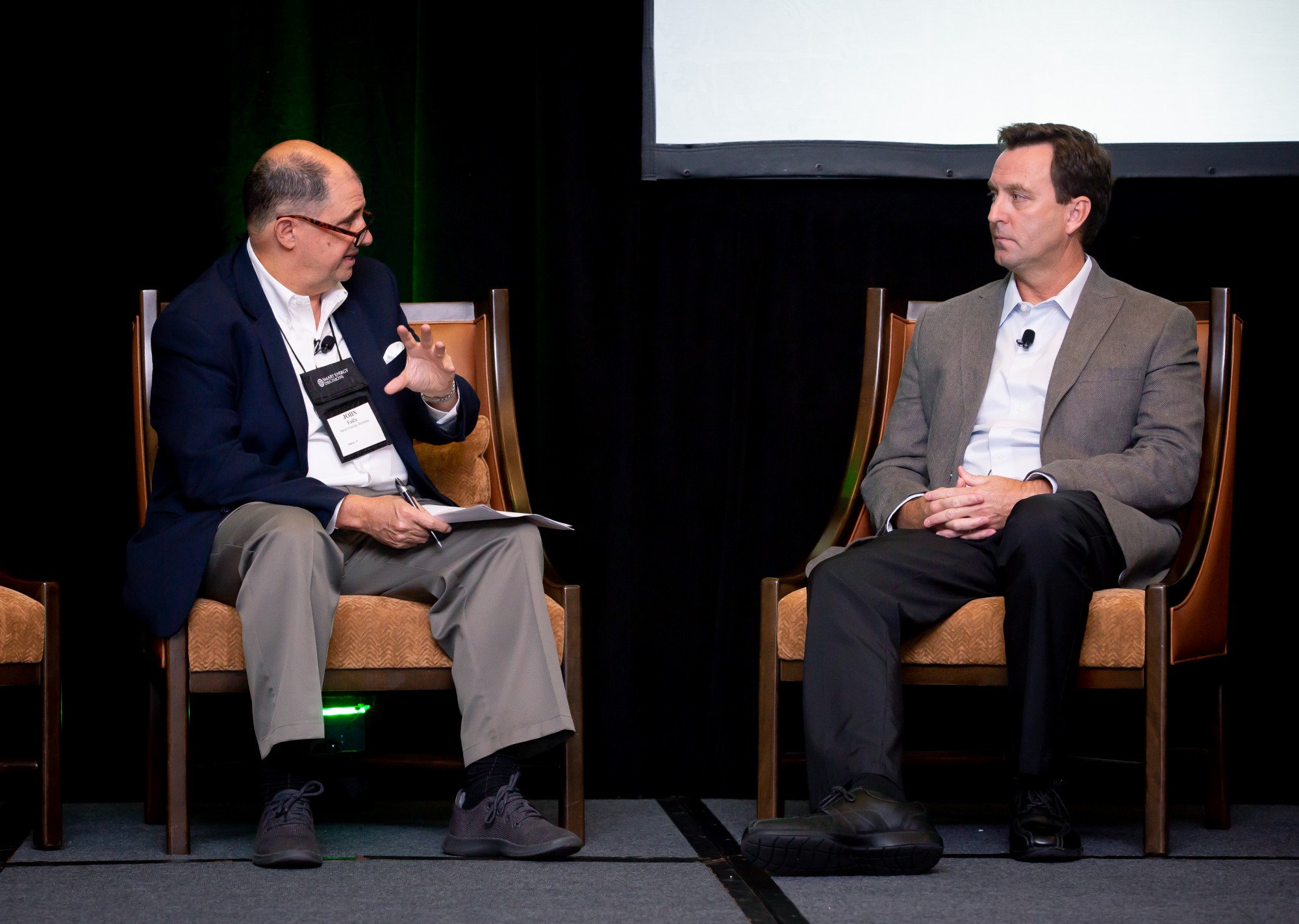 Sean Kinghorn, global sustainability leader at Intuit, in conversation with John Failla, discussed the company’s "Purely Green" initiative. The program allows anyone in the state of Texas that can choose retail for their electricity to source wind power from the same project in Texas that Intuit has tied into. "It’s unique in several ways," said Kinghorn. "I believe it’s the first RE offer in a retail setting in the US. Also, it’s cost competitive." Originally, the program was to be offered only to Intuit customers, who are typically residential and small businesses. "Then we took a step back and asked, what’s the impact we are trying to drive here. We want to create a huge market signal for RE in the state of Texas so we opened it up to the public. Any resident in the state of Texas for their home or small business can sign up for this program."
Sean Kinghorn, global sustainability leader at Intuit, in conversation with John Failla, discussed the company’s "Purely Green" initiative. The program allows anyone in the state of Texas that can choose retail for their electricity to source wind power from the same project in Texas that Intuit has tied into. "It’s unique in several ways," said Kinghorn. "I believe it’s the first RE offer in a retail setting in the US. Also, it’s cost competitive." Originally, the program was to be offered only to Intuit customers, who are typically residential and small businesses. "Then we took a step back and asked, what’s the impact we are trying to drive here. We want to create a huge market signal for RE in the state of Texas so we opened it up to the public. Any resident in the state of Texas for their home or small business can sign up for this program."
"Cities getting on board with renewables"
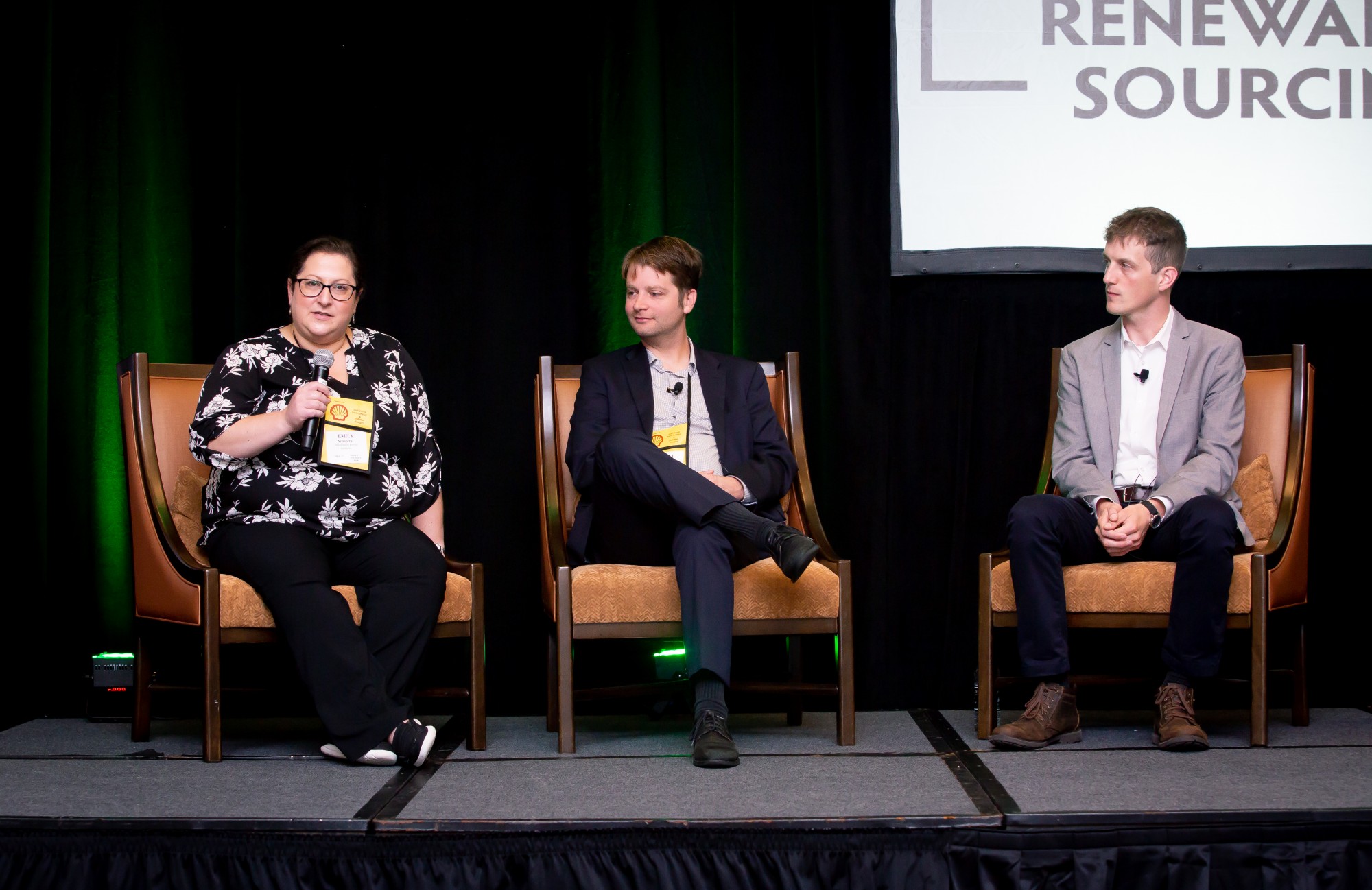 Reflecting the growing engagement of cities in renewables, representatives from Boston, Cincinnati and Philadelphia were asked to discuss their renewable energy efforts.
Reflecting the growing engagement of cities in renewables, representatives from Boston, Cincinnati and Philadelphia were asked to discuss their renewable energy efforts.
Michael Forrester, energy manager, City of Cincinnati, Forrester discussed the challenge of operating in a deregulated market. "My mayor wants to be 100% renewable yesterday so it’s matching the political will with the realities of the procurement and managing expectations and what you can and cannot do."
Adam Jacobs, energy manager, City of Boston, discussed his city’s foundational steps in energy conservation. "A lot of what we are trying to do is make sure that when we do go out for RE, we are right-sizing those systems, so we are not signing a PPA that’s covering 100% of our load today when we know that our load is going to be 30% or 40% lower 15 years from now."
Emily Shapira, executive director, Philadelphia Energy Authority, explained that their energy programs are focused on reducing household expenses and creating the jobs of the future, given the city's 26% poverty rate. "Economic development is a driver. If we can show that clean energy and energy efficiency builds new markets and attracts development, that’s been really persuasive."
Beyond green tariffs: utilities’ evolving role in RE
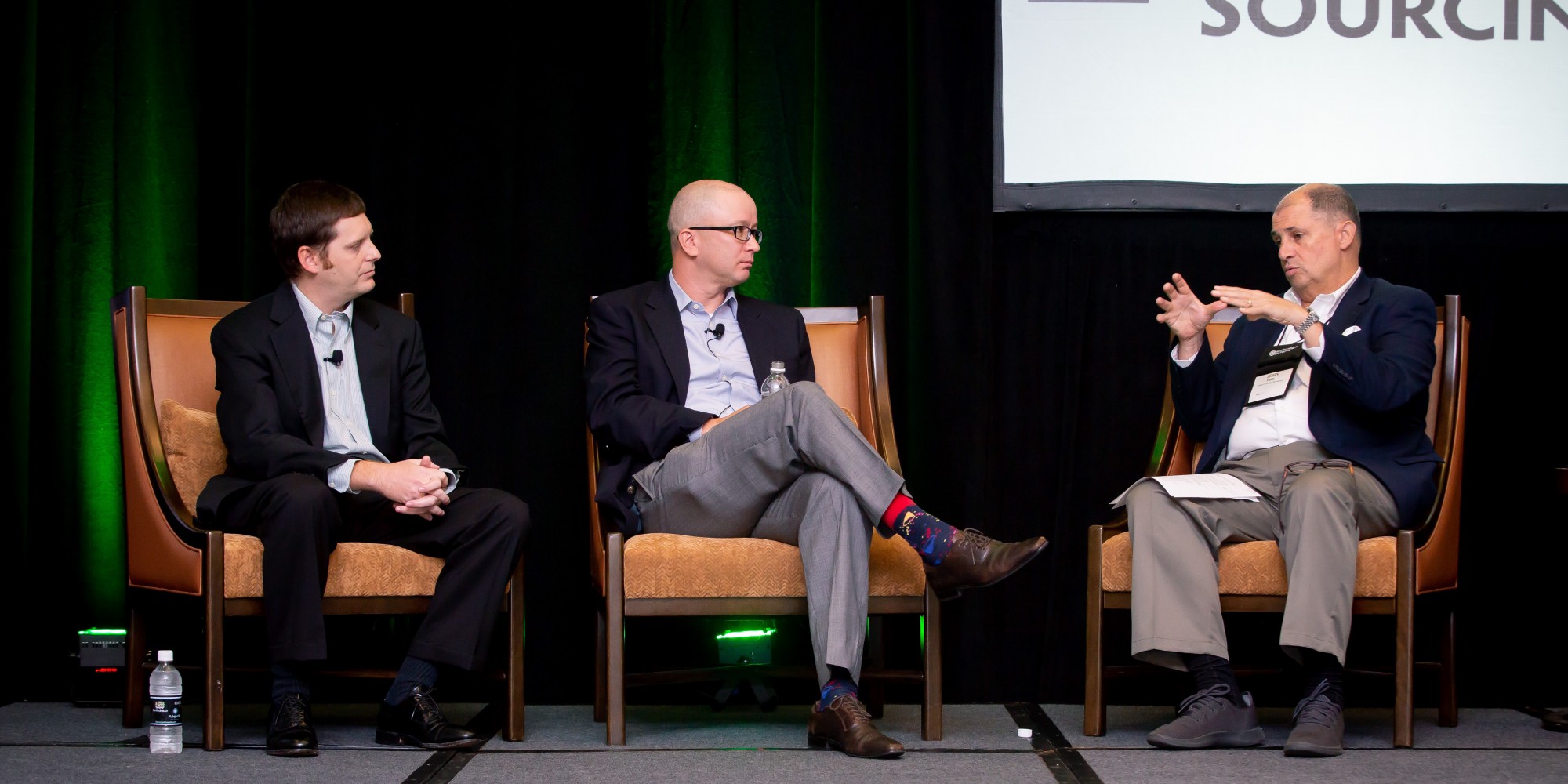 Scott Macmurdo, and Craig Noxon, VP, enterprise sales at REC Solar, shared their views on Duke Energy’s position as a company with both a regulated utility and other divisions involved in helping corporates source RE.
Scott Macmurdo, and Craig Noxon, VP, enterprise sales at REC Solar, shared their views on Duke Energy’s position as a company with both a regulated utility and other divisions involved in helping corporates source RE.
Craig Noxon, VP, enterprise sales at REC Solar discussed Duke Energy's focus on "cost, carbon, and control." He explained, "Utilities need to offer choice and have options that are cost beneficial." Green tariffs and other options that are better for the environment need to be available to address carbon concerns. Finally, he said, "Customers are really looking for control. They want the ability to dial into what kind of power they are getting, different aspects of reliability and green."
Scott Macmurdo, business development director of corporate accounts at Duke Energy Renewables, explained, "We’ve seen an evolution in terms of the length of contract terms around offsite large renewable energy purchases." Describing how early deals required locking in for 25 years to get a good price, he said, "That’s just not palatable anymore." The industry has changed terms from 25 years down to 10 years as the standard minimum offer for a new build solar or wind project in competitive markets.
"Portfolio energy management: integrating renewable power responsibly"
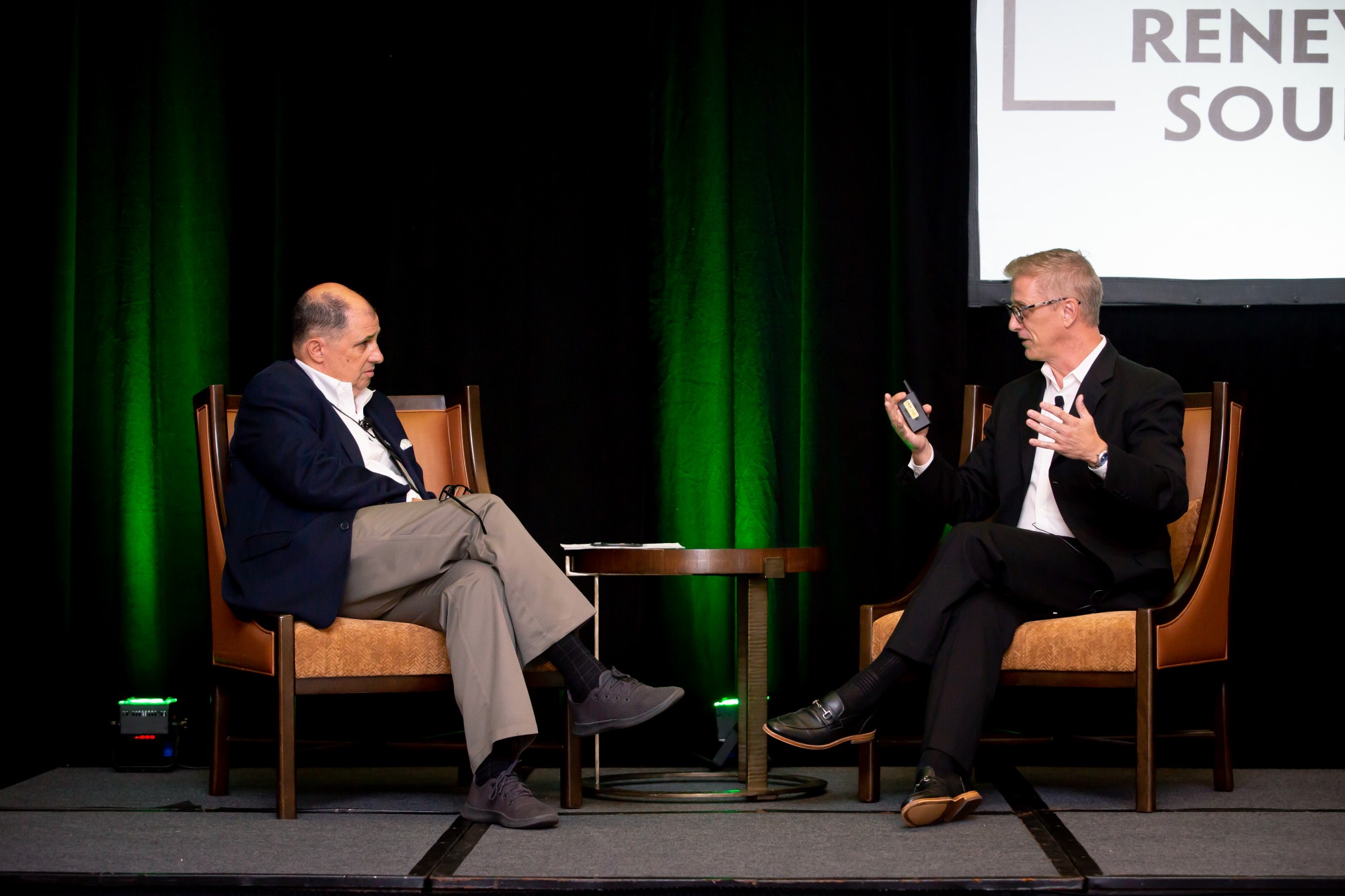 Brad Christensen, managing director of risk management products, Calpine Energy Solutions, advised attendees, "The first thing you have to think about is how quickly these markets have been transformed in the U.S. For a developed economy to have this kind of transformation within the timeframe that it’s taken place is unbelievably remarkable. For the first time in our history, we’ve crossed the 10% threshold of electricity being generated with renewable resources. When you couple that with the fact that 7%-8% of our produced electricity is coming from utility-scale hydro and 7%-10% is coming from behind the meter renewable projects, we are looking at a 25%-30% adoption of carbon-free resources that is generating our electricity in the U.S."
Brad Christensen, managing director of risk management products, Calpine Energy Solutions, advised attendees, "The first thing you have to think about is how quickly these markets have been transformed in the U.S. For a developed economy to have this kind of transformation within the timeframe that it’s taken place is unbelievably remarkable. For the first time in our history, we’ve crossed the 10% threshold of electricity being generated with renewable resources. When you couple that with the fact that 7%-8% of our produced electricity is coming from utility-scale hydro and 7%-10% is coming from behind the meter renewable projects, we are looking at a 25%-30% adoption of carbon-free resources that is generating our electricity in the U.S."
"Driving renewable energy in the supply chain"
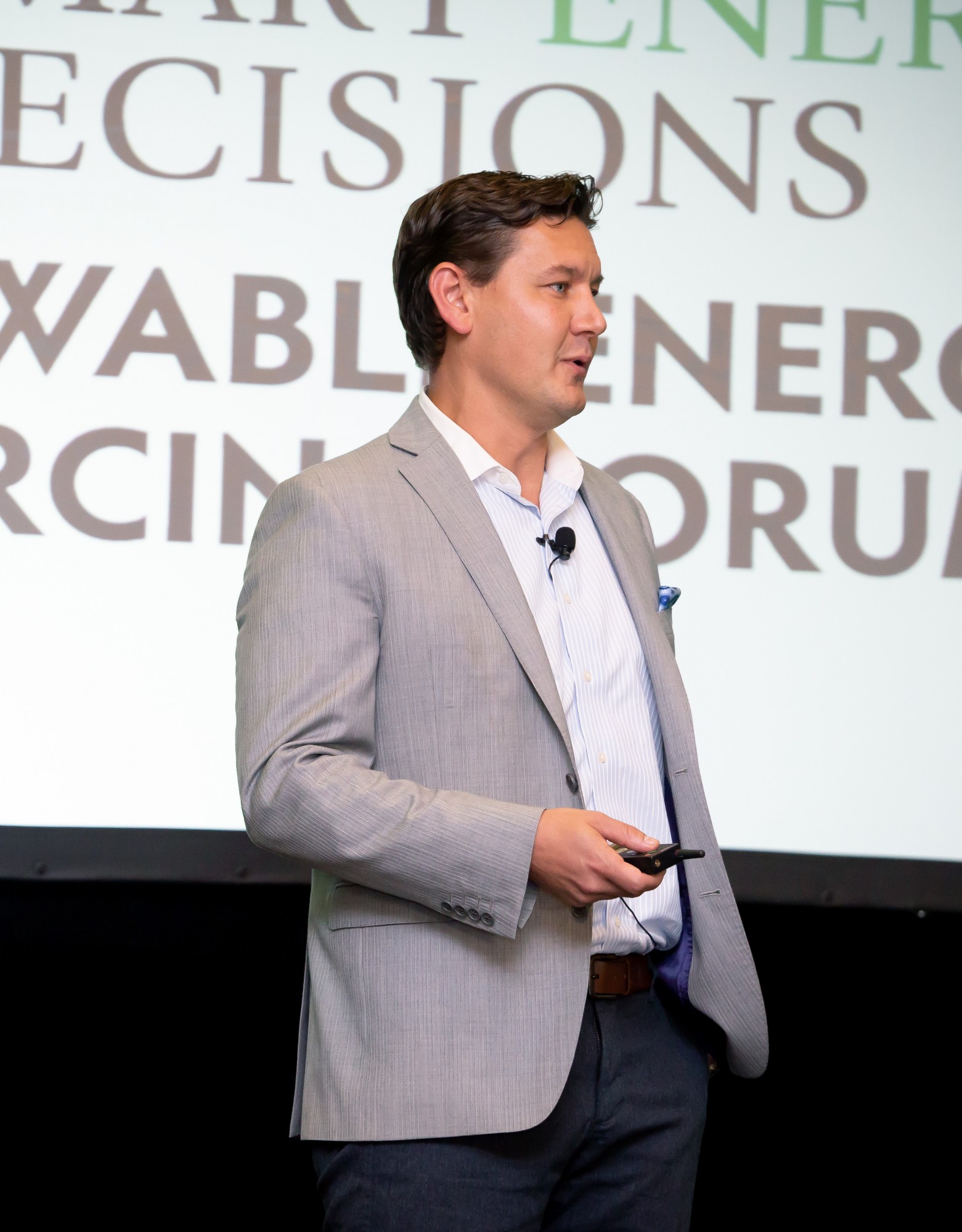 Kingspan’s aggressive strategy to combat the impact of climate change was explained by Brent Trenga, building technology director for Kingspan North America. We’ve come to the understanding that buildings are at fault," he said. "Buildings consume 40% of the energy annually and they emit a huge amount of CO2 into the environment."
Kingspan’s aggressive strategy to combat the impact of climate change was explained by Brent Trenga, building technology director for Kingspan North America. We’ve come to the understanding that buildings are at fault," he said. "Buildings consume 40% of the energy annually and they emit a huge amount of CO2 into the environment."
Explaining the impact of their supply chain on the company's carbon footprint, Trenga reported that "gently nudging" these companies to start aligning with Kingspan’s goals is now going to become "a more formalized ask." Noting his company’s progress made on goals to date, Trenga said, “The most important part about how we are going to start engaging with our supply chain is revenue and profit and turnover is up. We are doing this for a sustainable reason but we are doing it to make a profit. This is something that can be done properly and we are trying to feed that back into our supply chain."
In his closing comments, Failla announced the initial keynote speakers at the 2019 Smart Energy Decisions Innovation Summit, March 11-13 in Houston. For details, visit the event website at this link.
Read These Related Articles:
Stay Up-To-Date












